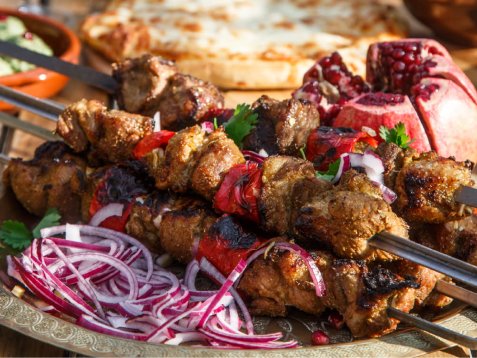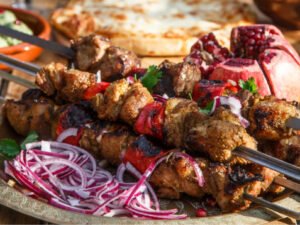Armenian food is a celebration of history, resilience, and rich flavors, deeply influenced by the country’s geography and historical ties with the Middle East, the Mediterranean, and the Caucasus. Rooted in fresh ingredients, bold spices, and time-honored techniques, Armenian cuisine offers a variety of dishes that are both comforting and full of depth.
Staple Ingredients of Armenian Cooking
Armenian cuisine is known for its use of fresh herbs, grains, meats, and dairy. Some of the key ingredients include:
✔ Lavash – The iconic Armenian flatbread, often used to wrap kebabs or served with cheese and herbs.
✔ Bulgur & Lentils – Common in traditional dishes like khashlama (a slow-cooked meat and vegetable stew) and mujadara (a lentil and rice dish).
✔ Pomegranate & Sumac – Essential in many Armenian salads and meat marinades, adding a tangy, slightly sweet depth.
✔ Dairy Products – Armenian yogurt (matsun) and cheeses like chanakh or lori play a major role in local cuisine.
Famous Armenian Dishes You Must Try
-
Khorovats – Armenian barbecue, usually made with pork or lamb, marinated in spices and cooked over an open flame.
-
Dolma (Tolma) – Grape leaves or cabbage stuffed with a savory mixture of minced meat, rice, and herbs.
-
Harissa – A comforting, slow-cooked porridge made of chicken and cracked wheat, often eaten during religious fasting.
-
Lahmajoun – Often called Armenian pizza, this thin flatbread is topped with spiced minced meat, tomatoes, and herbs.
-
Gata – A flaky, buttery Armenian pastry filled with a sweet walnut or sugar mixture.
Cultural Significance of Armenian Food
Armenian meals are meant to be shared, bringing families and communities together. Whether it’s a lavish feast with dozens of small plates or a simple dinner with fresh bread and cheese, the essence of Armenian food is about connection and tradition.



